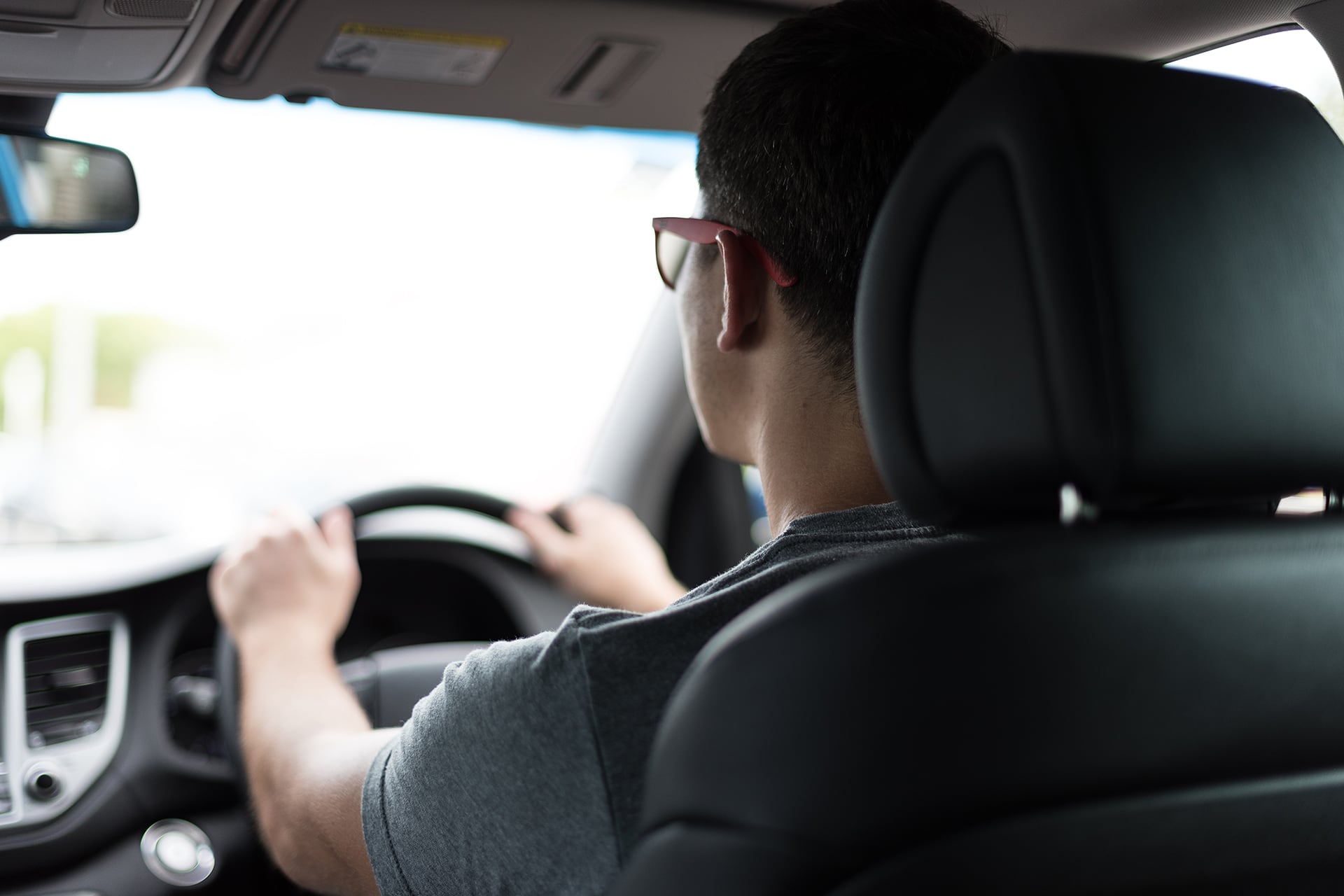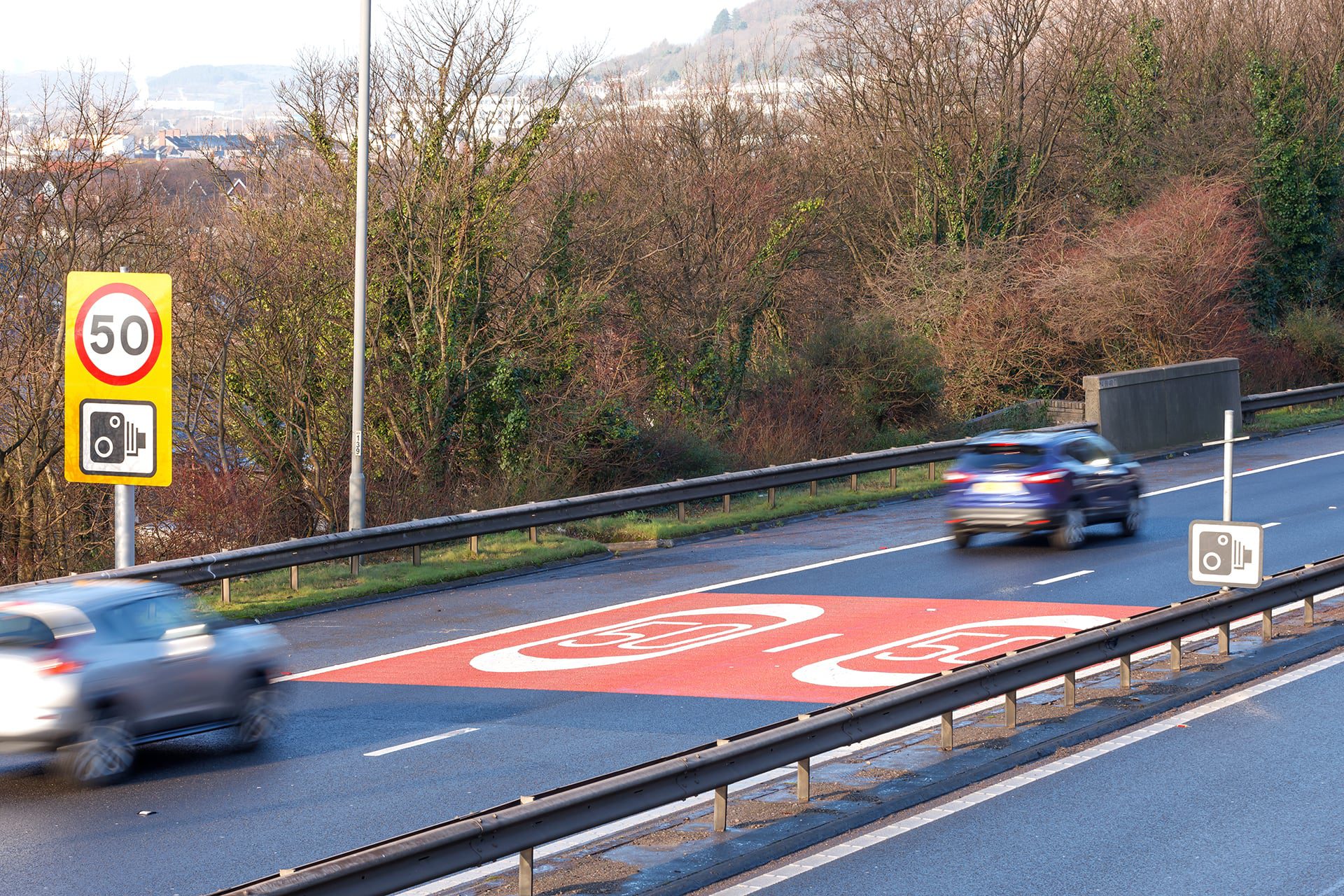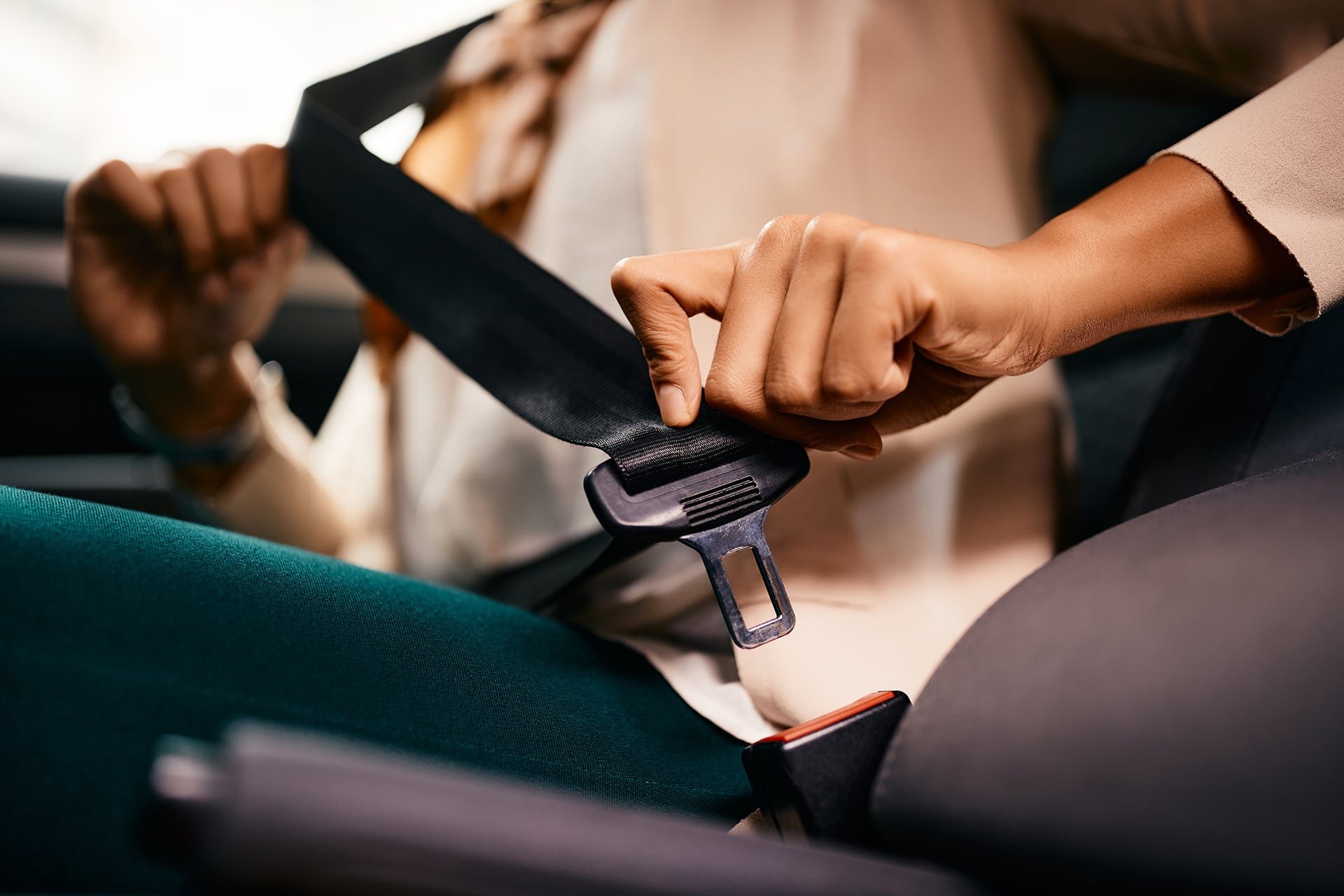We know that learning to drive is an important step for many young Brits across the country and taking the practical driving test with dreams of gaining your pink licence can be nerve-racking.
However, our research shows that where you live can have a big impact on the outcome of your practical and theory driving tests.
Furthermore, the statistics show that some may have to wait longer to start their driving lessons than others, as the number of local driving instructors varies greatly across the country.
On this page, you will find periodically updated data on all UK practical and theoretical driving test centres*. You can use this to prepare your own learner driver journey by finding out more about your local pass rates and the availability of driving instructors.
Which areas perform the best/worst in practical driving tests?
The average pass rate from all 330 practical driving test centres in 2022/23 was 48%. This is down from 49% in 21/22, and 50% in 20/21.
April (49.6%) is the most common month to pass your practical test, whereas December (42.1%) is the most common month to fail.
Over a quarter fail their test due to junction observations (26%) – this is the most common reason for an instant fail.
The top ten driving test centres for pass rates for the whole of the UK are all located in Scotland:
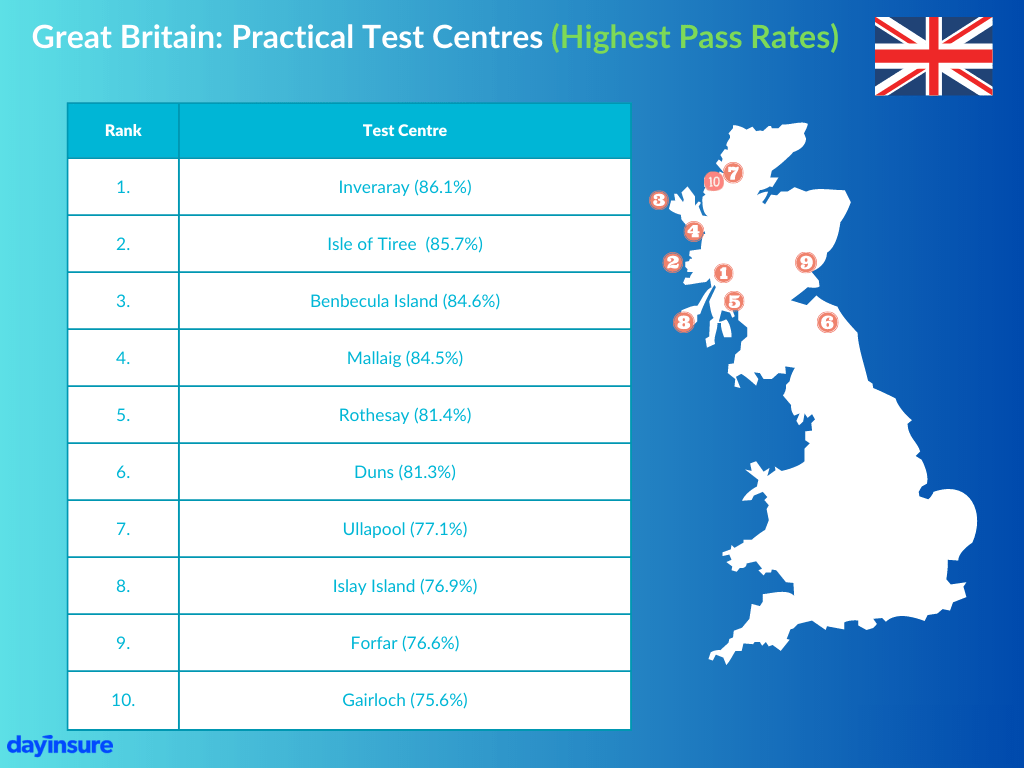
Speke in Liverpool hosts the worst performing practical test centre in the country, with only around a quarter of learners passing their test (27.1%).
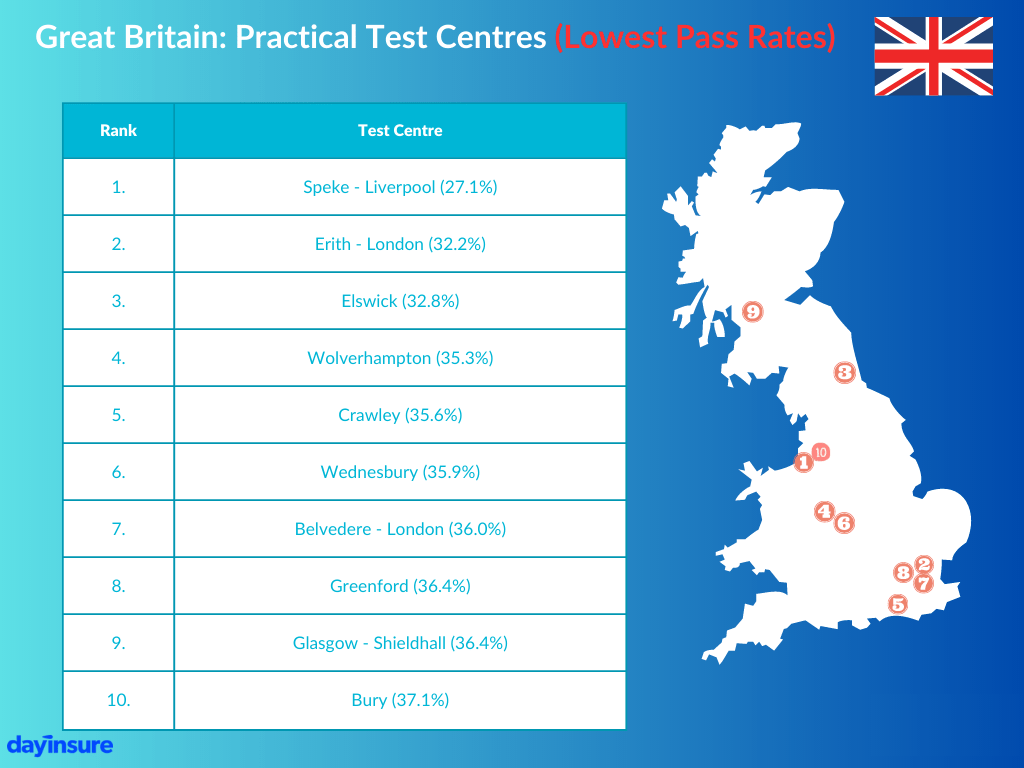
In England, Alnwick is the place to be for learner drivers, with over seven out of ten drivers (72.7%) passing their test.
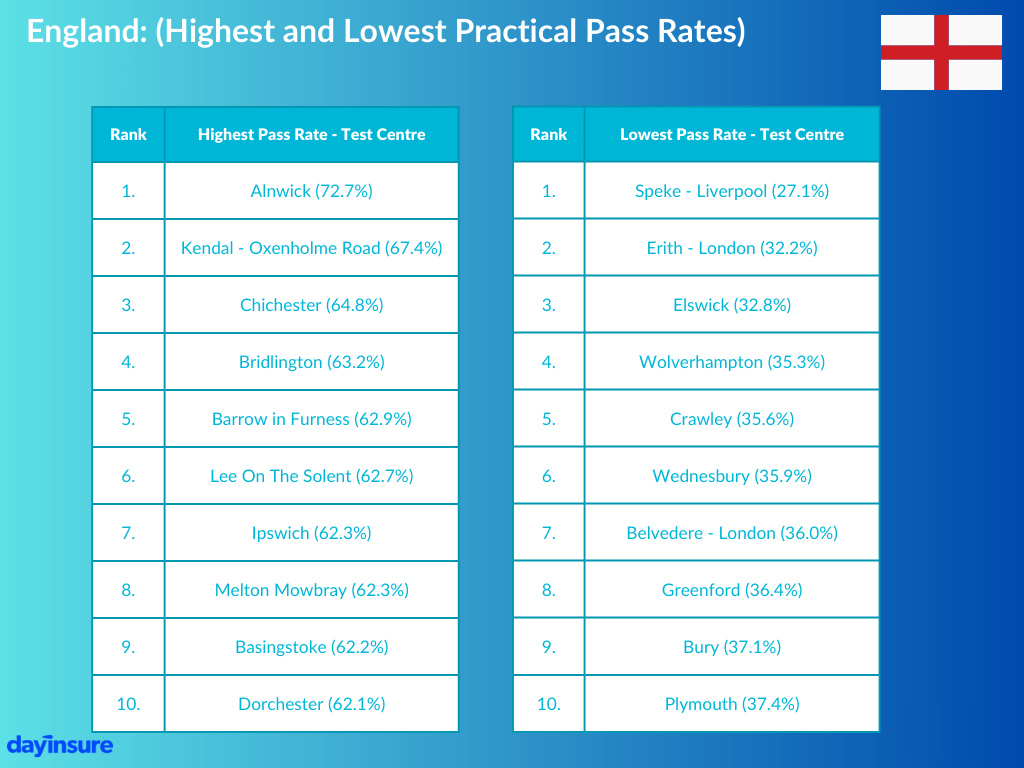
Across the border with Wales, Welsh learners should flock to Pembroke Dock, which has the highest pass rate in the country (66.2%).
Drivers in Newport struggle the most, with less than half passing their test (47.4%).
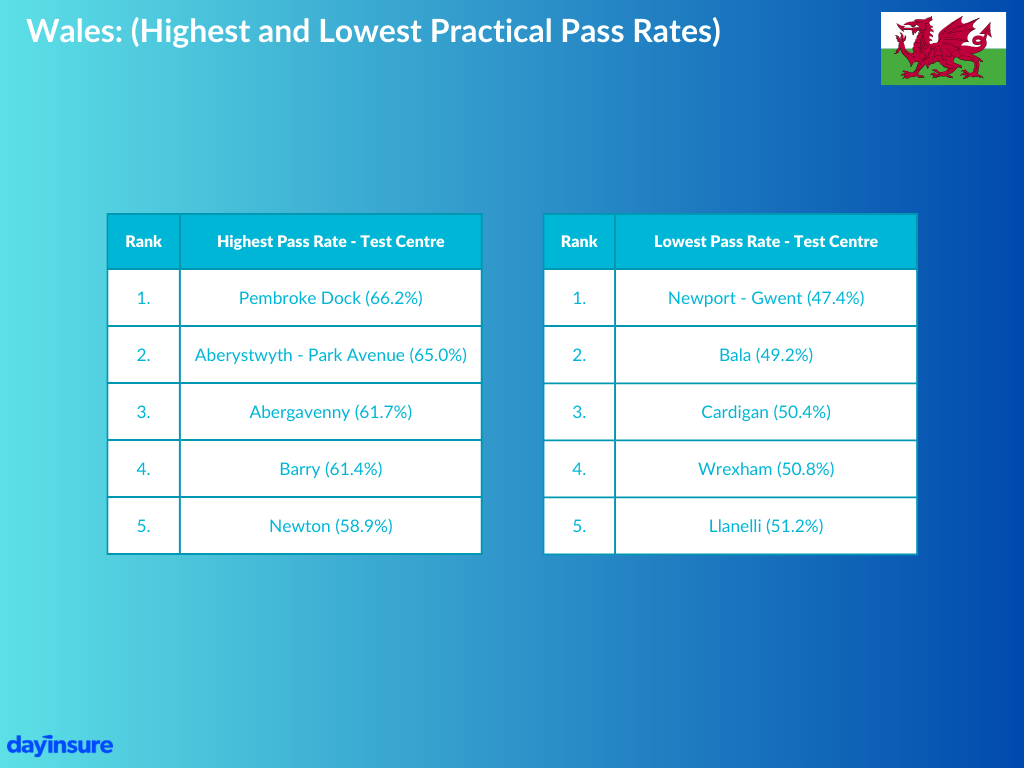
While Scotland plays host to all ten of the highest performing UK practical test centres, it isn’t successful in every area.
Both of the Scottish test centres with the lowest pass rate are in Glasgow, with just over a third of learners passing their test in Shieldhall (36.4%), and less than half succeeding in Anniesland (42.5%).
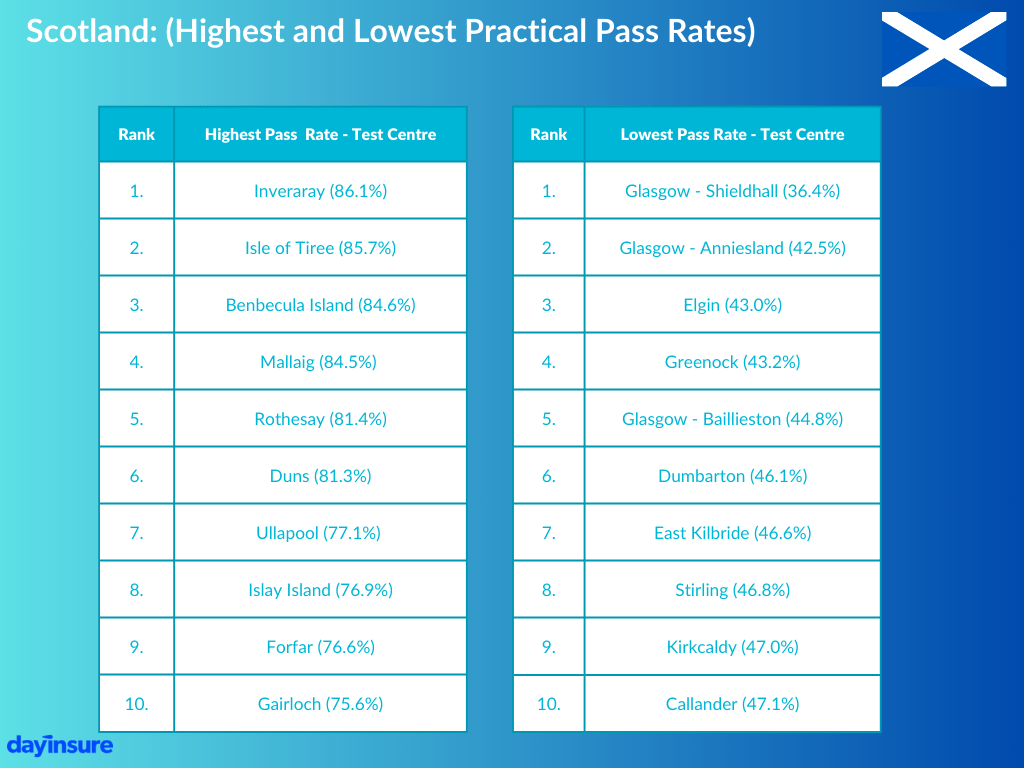
Which areas perform the best/worst in theory driving tests?
The average pass rate from the 203 theory test centres in 2022/23 was 44%. This is down from 50% in 21/22 and 56% in 20/21.
The theory pass rate was as high as 65% in 2007/2008, but has dropped below 50% from 2015/2016 onwards.
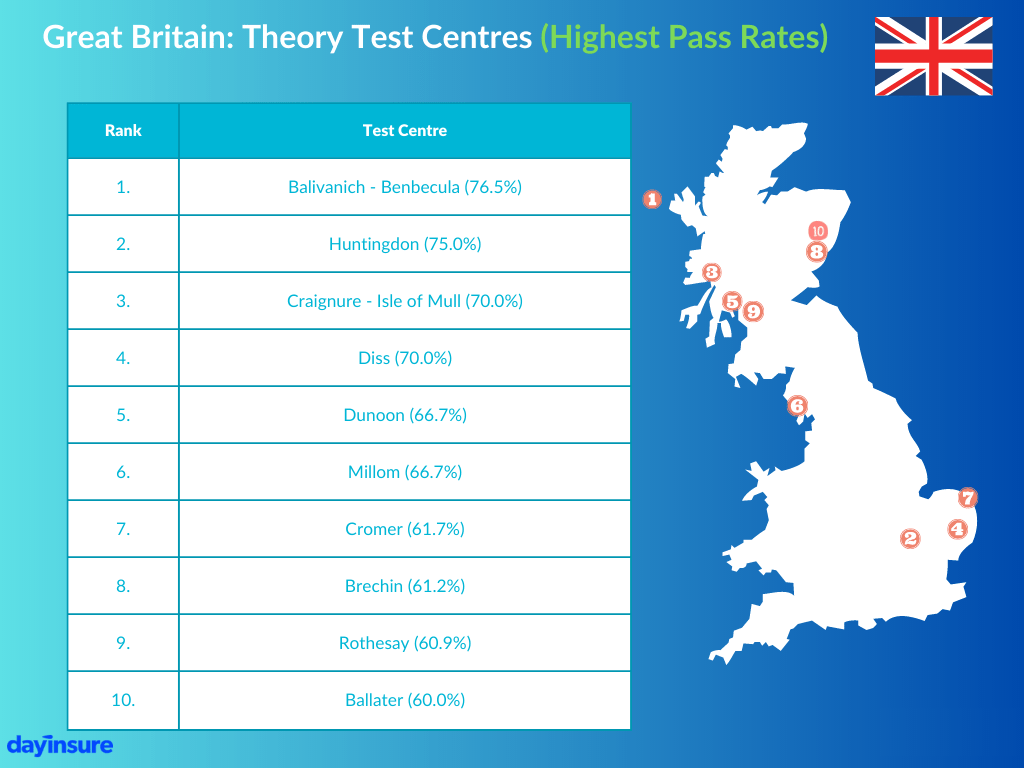
Bradford has the worst theory test centre pass rates in Great Britain, with just over a third of learners passing their theory test (36.9%). Other test centres which ranked in the bottom 10 include Leicester (39.4%), Doncaster (40.1%) and Middlesbrough (40.5%).
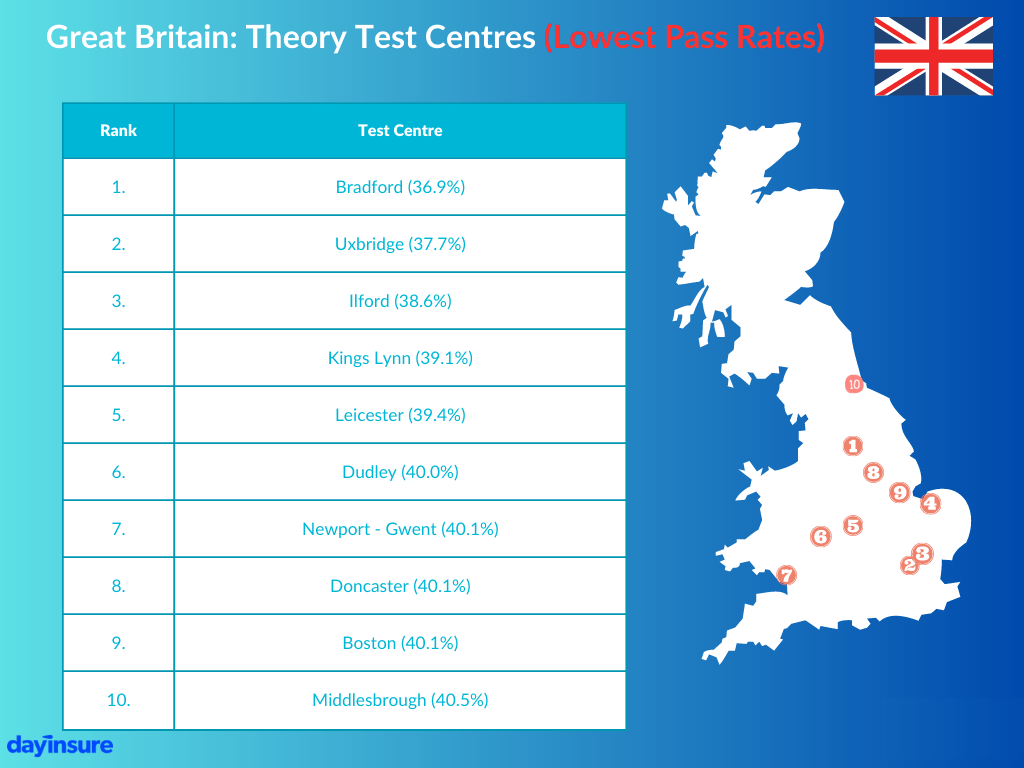
Learners in Huntingdon (75.0%) are twice as likely to pass their theory test as those taking their test in Bradford (36.9%).

Aberystwyth is the most fruitful location for learners looking to pass their theory test in Wales, with around half of learners (50.2%) finding success.

Balivanich on the Isle of Benbecula is the place to be for anyone taking their theory test in Scotland, with over three-quarters of drivers (76.5%) passing on average.
This is a huge uptick on Lerwick, where less than half of learners pass their theory test (40.9%), the lowest rate in Scotland.
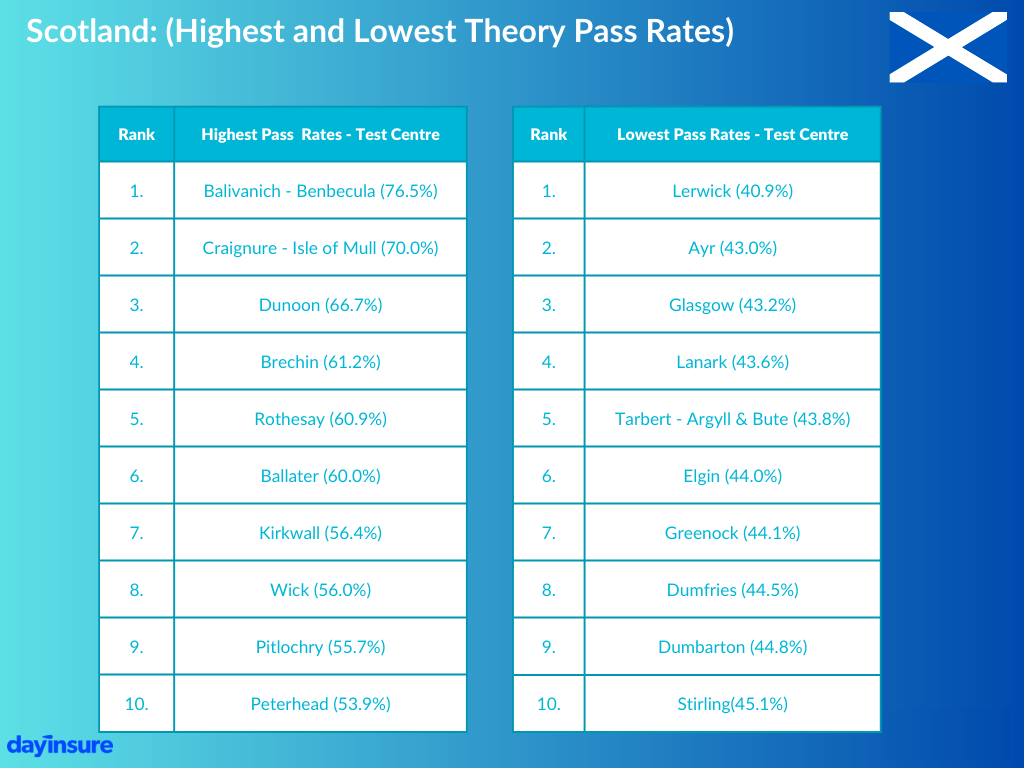
Which areas have the most/least driving instructors per learner drivers?
We analysed the number of registered driving instructors up and down the country and found that some areas were awash with learners that are potentially looking for an instructor, compared to others.
Areas with the most learners per instructor have a high job potential for anyone looking to become an instructor. The average salary for a driving instructor starts at £15k and rises to around £30k, for anyone interested!
The average number of driving instructors per UK postcode area was 314.

These are the top 10 postcodes with the most learners per driving instructor (biggest opportunity for jobs for prospective instructors / most competitive for learners to find an instructor):
1.Manchester: 360 learners per instructor
2.Liverpool: 323 learners per instructor
3.Coventry: 312 learners per instructor
4.Glasgow: 290 learners per instructor
5.London: 288 learners per instructor
6.Edinburgh: 276 learners per instructor
7.Newcastle: 266 learners per instructor
8.Leeds: 261 learners per instructor
9.Teesside: 254 learners per instructor
10.Dundee: 249 learners per instructor
And here are the top 10 postcodes with the least learners per driving instructor (biggest amount of choice for learners / toughest for prospective instructors):
1.Llandrindod Wells: 113 learners per instructor
2.Colchester: 135 learners per instructor
3.Worcester: 149 learners per instructor
4.Torquay: 150 learners per instructor
5.Lincoln: 151 learners per instructor
6.Salisbury 152 learners per instructor
7.Taunton 153 learners per instructor
8.Chelmsford: 155 learners per instructor
9.Medway: 160 learners per instructor
10.Huddersfield: 166 learners per instructor
Do I need learner driver insurance?
Even if you haven’t yet passed your practical test, as a British provisional licence holder you’re legally required to have insurance when you’re driving a car under supervision.
If you are driving with a driving instructor, you are likely to be covered under their insurance. But, if you want to drive outside those lessons with a friend or family member, you’ll need a valid policy.
Check out our learner driver insurance page here.
Conclusion
As you can see, learner driver pass rates fluctuate greatly across the country.
Furthermore, some areas offer great opportunities to find a local driving instructor, while in others learner drivers may struggle to find a licenced instructor to start driving.
Getting valuable driving experience is one of the best ways to get ready for your own test. However, it’s worth keeping in mind that you don’t always need to wait for a licenced instructor to start practising.
You can practice in any car, as long as you’re supervised by someone who’s over 21 years old who’s held a British driving licence for at least three years (though some insurers, like Dayinsure, require the person supervising to be over 25).
Before you jump in the car and start driving though, you need to ensure that everyone is fully insured to drive the vehicle. Our temporary learner driver insurance is a cheap and flexible option to get covered for your practice, offering coverage from just one day up to 5 months, and it only takes a few minutes to sign up.
*Sources & Methodology
- DVSA: Practical car pass rates by gender, month and DTC (Time Period Captured Apr 22 – Dec 22)
- DVSA: Theory car pass rates by gender, month and DTC (Time Period Captured Apr 22 – Dec 22)
- Department of Transport: Trainee Licence Holders and Approved Driving Instructors by postcode area: March 2023
- DVSA: FOI Data covering Cat B car tests between 01/01/2022 to 31/12/2022
- DVLA: Provisional and Full driving licences by postcode district and gender, Great Britain: as of 30 April 2022
